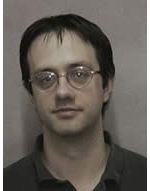Seminar 26th February 2010 4 p.m. Henry Charnock Lecture Theatre, National Oceanography Centre
OPPORTUNITIES IN 3D VOLUME IMAGING AT SOUTHAMPTON: AN INTRODUCTION TO
PROF. IAN SINCLAIR
School of Engineering Sciences, University of Southampton
- Web page
- http://www.noc.soton.ac.uk/nocs/friday_seminars.php
- Submitter
- Nicki Lewin
The childhood dream of Superman's instant 3D X-ray vision is becoming a substantial reality across a tremendous range of contemporary science and engineering. In particular, the non-destrucive volume imaging of X-ray computed tomography (CT) is reaching far beyond the more widely known medical domain. Building on years of imaging experience within the School of Engineering Sciences, recent Research Council funding has led to the establishment of multi-million pound facilities for rapid CT scanning of objects, from rockets to rocks to rodents. These facilities will serve users across the whole university, coming online in the summer of 2010.
Whilst taking high resolution three dimensional images has almost become as fast as taking a polaroid photograph, there is a price for scientists and engineers concerned with using the technique. In particular, few turn out to be ready for the enormous volumes of information that are produced and the analyses that can be carried out. Within the newly established CT lab, we have brought together teams of scientists and engineers that have immediate need of CT imaging, with a suite of advanced CT capabilities, along with world-leading experts in high performance computing (HPC), and the art of image processing within computers (Computer Vision). Together this will produce a uniquely efficient, multi-disciplinary centre for 3D imaging science, exploiting the latest technologies in cost-effective supercomputing and data handling methods. The centre will further exploit our experience in eScience, unifying and simplifying the interaction between human, instrument and data. When included with CT facilities already available at Southampton, the centre will provide for the entire imaging process for objects of the order of an ant's head to a car engine; from initial experimental concept and training, through data capture and analysis, to new scientific knowledge.
